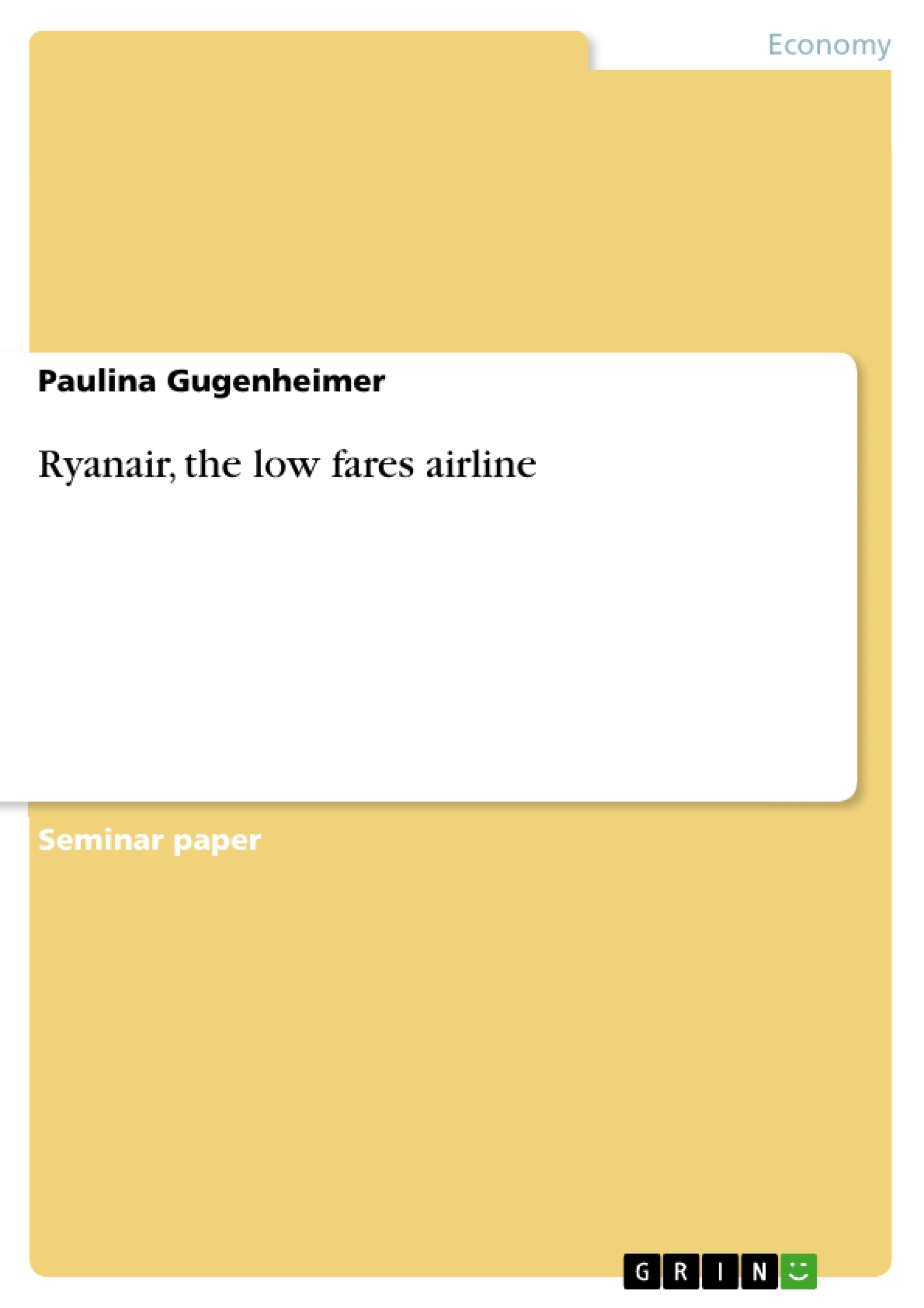The European airline industry has historically been dominated by national carriers like British Airways, Lufthansa and Air France, whose aggregate share of intra European routes was about 70 percent by the end of 1998. But from 1990 a rising share of the market started to migrate to the budget carriers because of the deregulation policy of the EU. This essay contains an analysis of the European airline industry as a part of the transportation industry at the beginning of 1999 with a special emphasis on the budget sector. In that sector, one of the most famous and successful budget carriers, Ryanair, will be contemplated with regard to its strategy and its strengths and weaknesses. Finally, a short summary will be done about what happened in the European airline industry between 1999 and 2003.
Inhaltsverzeichnis (Table of Contents)
- Ryanair: The Low Fares Airline
- The European Airline Industry
- The Market and the Main Players
- Regulatory Influences
- Problems of the European Airline Industry
- Profitability in the Airline Industry
- Porter's Five Forces Model
- Key Success Factors
- Ryanair's Strategy
- Cost Leadership
- Differentiation
Zielsetzung und Themenschwerpunkte (Objectives and Key Themes)
This case study examines the European airline industry at the beginning of 1999, focusing on the budget sector and its impact on the market. It delves into the strategies and success factors of Ryanair, a leading budget carrier, and provides a summary of the industry's development between 1999 and 2003.
- The European airline industry's market dynamics and competitive landscape
- The role of deregulation and liberalization in the industry's development
- The impact of budget airlines on the traditional airline model
- Key success factors for profitability in the airline industry
- Ryanair's strategy for cost leadership and differentiation
Zusammenfassung der Kapitel (Chapter Summaries)
- Ryanair: The Low Fares Airline: This chapter introduces Ryanair, a leading budget airline, and the European airline industry's shift toward budget carriers due to EU deregulation.
- The European Airline Industry: This section examines the European airline market in 1999, including its size, growth potential, key players, and competitive dynamics. It explores the differences between traditional and budget airlines in terms of customer profiles and service offerings. It also discusses the regulatory environment, specific problems facing the industry, and key factors for achieving profitability.
- Porter's Five Forces Model: This chapter applies Porter's Five Forces model to analyze the competitive landscape of the European airline industry, focusing on rivalry among existing players, the threat of new entrants, the bargaining power of suppliers and buyers, and the threat of substitutes.
- Key Success Factors: This section identifies key success factors for profitability in the European airline industry, including revenue generation through competitive airfares, punctuality, frequency, and cost-saving measures. It explores the role of load factors and operating income per available seat-mile in measuring profitability.
- Ryanair's Strategy: This chapter delves into Ryanair's strategy for achieving success in the competitive airline market, highlighting its focus on cost leadership through low fares, frequent short-haul flights, a single aircraft type, and outsourcing nonessential services. It also examines Ryanair's efforts to differentiate its offering by expanding its route network and offering ancillary services.
Schlüsselwörter (Keywords)
This case study revolves around the European airline industry, deregulation, budget airlines, Ryanair, cost leadership, differentiation, profitability, Porter's Five Forces model, competitive landscape, and key success factors.
- Arbeit zitieren
- Paulina Gugenheimer (Autor:in), 2003, Ryanair, the low fares airline, München, GRIN Verlag, https://www.hausarbeiten.de/document/54645


